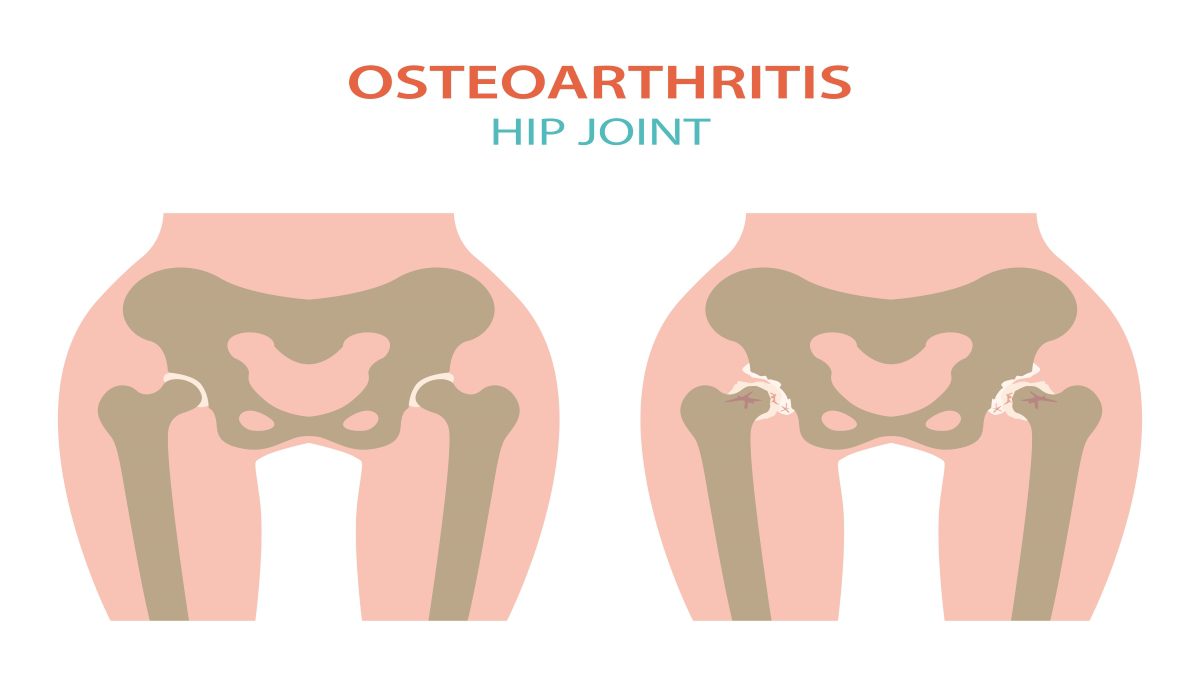Hip osteoarthritis meaning
Hip osteoarthritis is a common type of arthritis in joints that bear weight, like the hip. It is sometimes referred to as “wear-and-tear” arthritis because of degeneration of the bony surfaces and cartilage of the hip joint, which causes inflammation. Hip osteoarthritis most commonly occurs in people who are middle-aged or older. In addition, wear and tear damage can also be caused by injury or repetitive forces applied to the hip over time.
Normally, the hip joint surfaces are smooth, with cartilage present in the joint where the bones come together. This articular cartilage allows for smooth movement in the joint and provides for the absorption of shock when a person runs, walks, or jumps.
Pain and stiffness are common in osteoarthritis of the hip. These symptoms can make simple, everyday tasks like walking, standing up, or bending over difficult.
Hip osteoarthritis is a progressive disease. For this reason, getting treatment early in the course of the disease can lessen the impact it has on a person’s life. No cure currently exists for hip osteoarthritis, but there are many ways to treat the condition. In addition, treatment can help patients manage their pain and remain active.
Hip joint anatomy
The hip joint is a ball-and-socket joint. This allows you to move your leg side-to-side, back and forth, and rotate when you hold your leg straight. The acetabulum is the socket portion of the joint. It is located in the pelvis, where the head of the large thigh bone, or femur, joins with the pelvis. The rounded thighbone (the femur) and the socket (acetabulum) are both lined with strong and rubbery articular cartilage. This cartilage is slippery and flexible and prevents grinding of the bones when movement occurs in the hip.
Prevalence
The hip joint bears the body’s weight, putting it at an especially high risk to wear and tear damage. The hand and the knee are the sites most commonly affected by osteoarthritis. Hip osteoarthritis is the third most common site for the development of the disease.
- Hip osteoarthritis affects people over the age of 45 years at a rate of 8 percent
- Females are at higher risk of developing hip osteoarthritis
Hip osteoarthritis risks
Many factors can contribute to the development of hip osteoarthritis. They may include:
- Age: people over the age of 40 years are at higher risk for hip osteoarthritis
- Weighing more than is recommended for your height and age
- Genetic factors can contribute to the development of hip osteoarthritis
- A past history of surgery, trauma, or injury to the hip joint can increase the chances of developing hip osteoarthritis
- Weakness in the muscles; especially the gluteal muscles and the quadriceps
- Tightness in the muscles; for example, the gluteal muscles, the hip flexors, and the adductors
- Stiffness in the joints of the lumbar or thoracic vertebrae (spine)
- An inactive lifestyle increases the risk of hip osteoarthritis
- Postural abnormalities of the legs, for example, the difference in leg length
- Poor body mechanics or abnormal foot posture, for example, flat feet, can increase the risk of hip osteoarthritis
- Wearing inappropriate shoes
- Impaired balance or poor stability or strength of the core can increase the chance of developing hip osteoarthritis
- Improper or excessive twisting or weight-bearing activity, or not allowing sufficient recovery time after weight-training activities
- Inappropriate diet or inadequate nutrition can increase the risk of hip osteoarthritis
- Abnormalities in the bones of the hip joint can lead to hip osteoarthritis
Hip osteoarthritis causes
The causes of hip osteoarthritis are unknown, but certain factors that can contribute to its development include increasing age, being overweight, and injury to the joint.
Other factors that can sometimes cause hip osteoarthritis include:
- Improper formation of the hip joints: This is thought to cause hip osteoarthritis when it develops in people who are young or less than middle-aged. Often, problems are seen in how the bones in the joint are shaped, and this may be an inherited condition. These problems may be minor but may cause hip mechanical stress, which leads to stress in the ball-and-socket joint, leading to hip osteoarthritis.
- Genetic or inherited problems: with the cartilage or perhaps with the body’s immune system may cause hip osteoarthritis to develop due to abnormal reactions to damage in the joint.
- Excessive stress on the joints: Extra stress may be caused to the hip joint by excess body weight or intensive weight-bearing activities, such as sports, leading to hip osteoarthritis.
Click Here to read about Treatment.
















Leave a Reply
You must be logged in to post a comment.